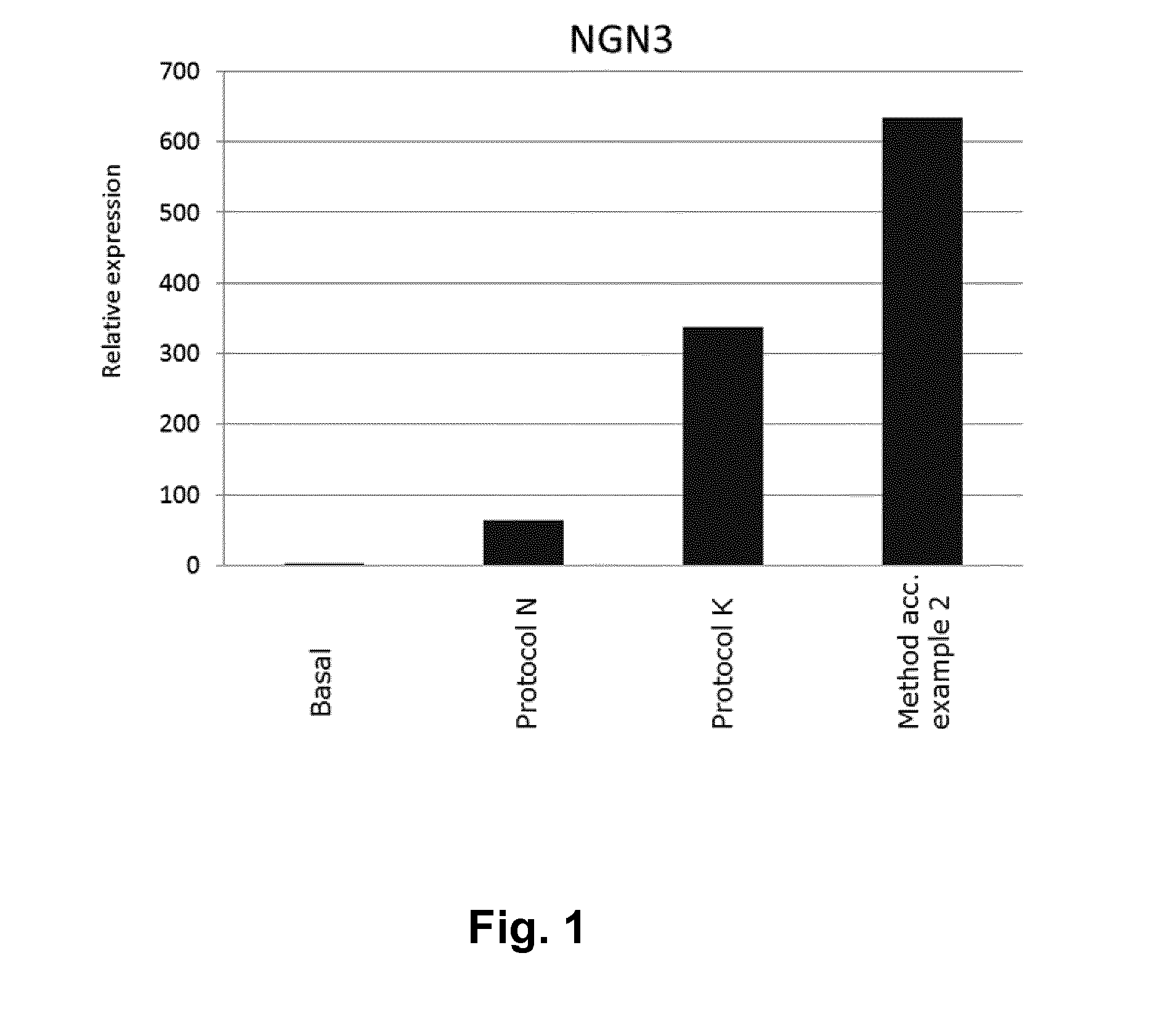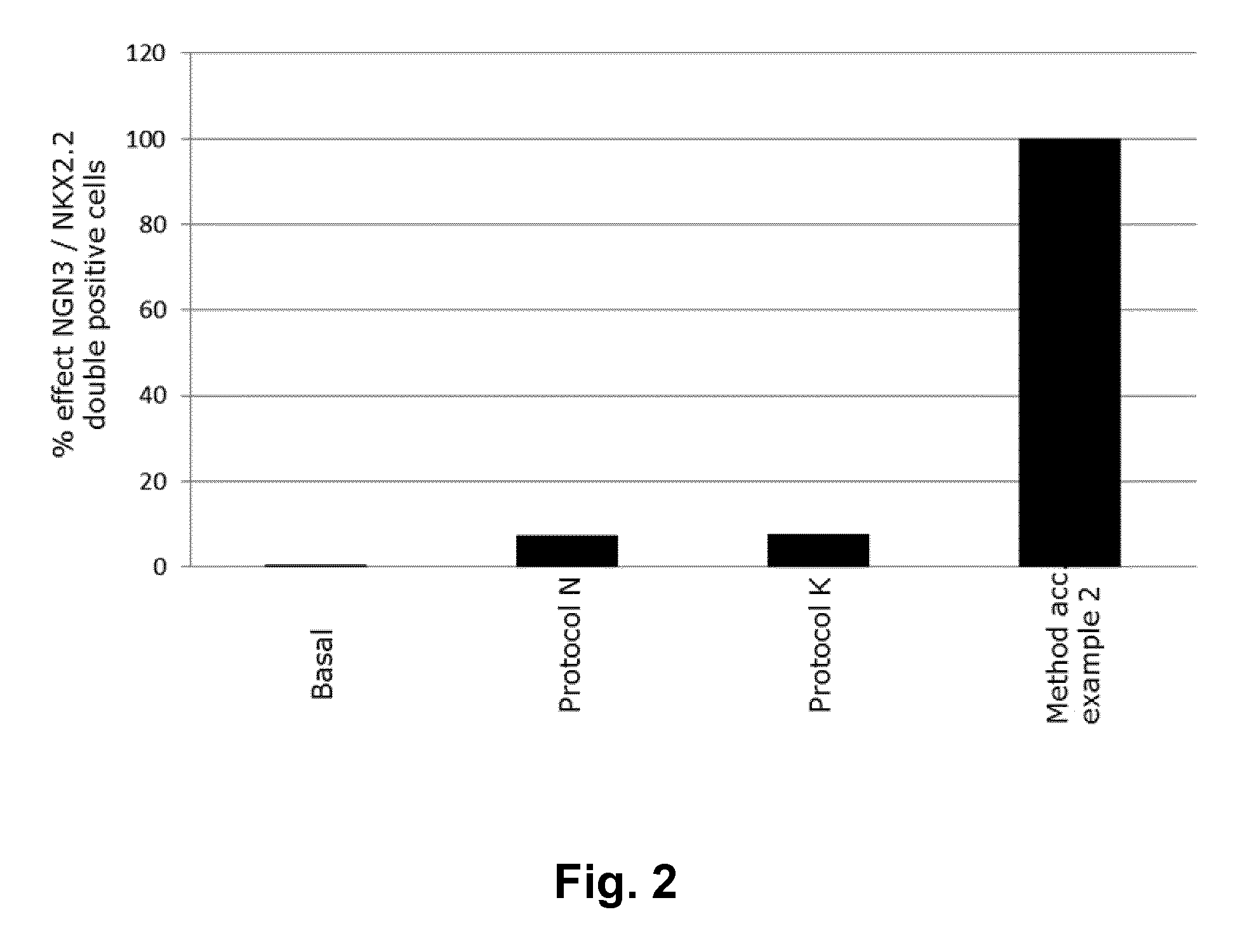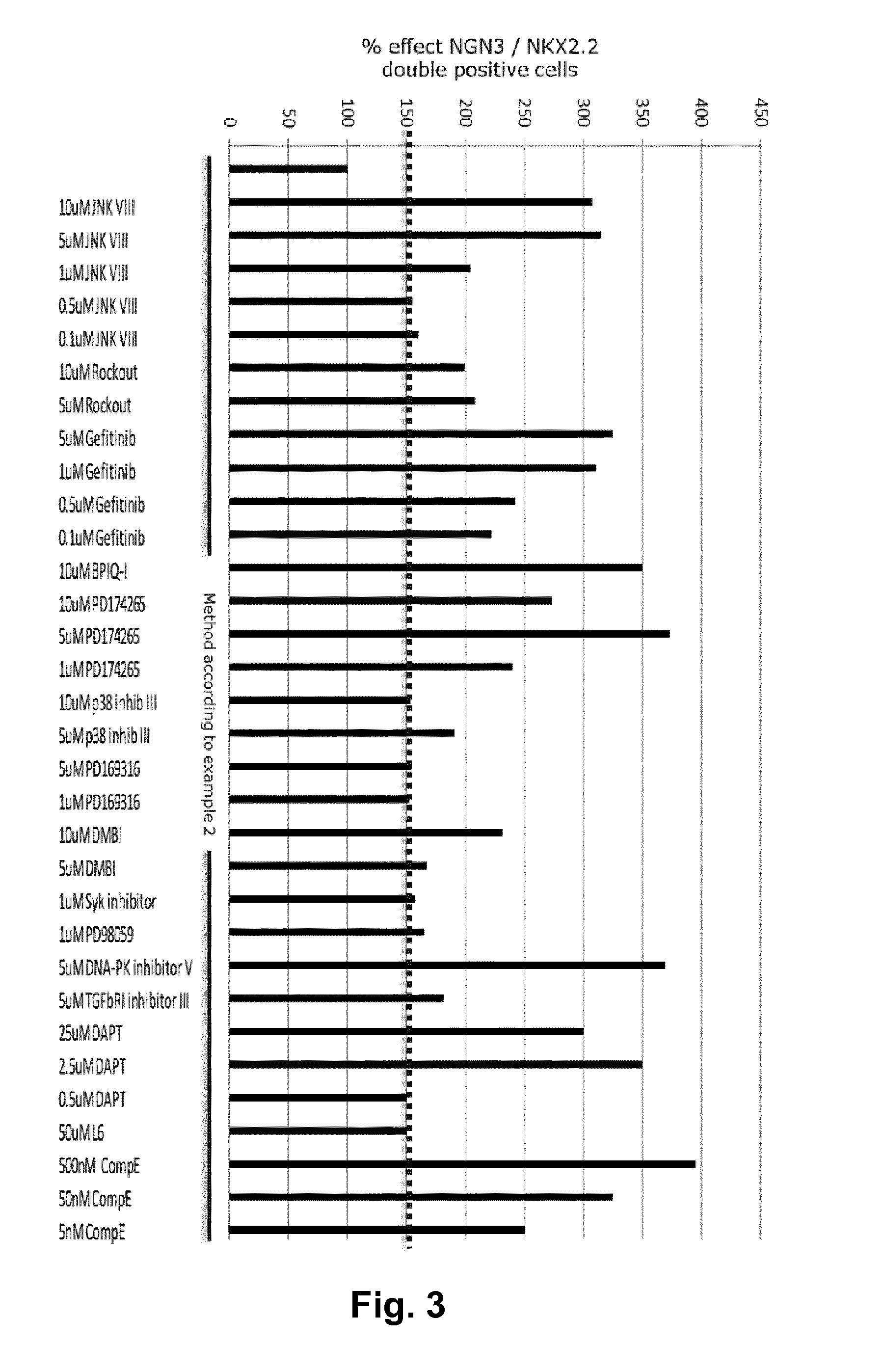Generation of Endocrine Progenitor Cells from Human Pluripotent Stem Cells Using Small Molecules
- Summary
- Abstract
- Description
- Claims
- Application Information
AI Technical Summary
Benefits of technology
Problems solved by technology
Method used
Image
Examples
embodiment 1
[0107]A method for obtaining NGN3 / NKX2.2 double positive endocrine progenitor cells wherein a cell population comprising pancreatic endoderm cells are exposed to
[0108]a TGF-β type I receptor inhibitor, and
[0109]a BMP antagonist, and
[0110]an adenylate cyclase activator, and
[0111]nicotinamide
[0112]in basal medium.
embodiment 2
[0113]A method according to embodiment 1 wherein the TGF-β type I receptor inhibitor is SB431542 and the BMP antagonist is noggin.
embodiment 3
[0114]A method according to embodiments 1 or 2 wherein the adenylate cyclase activator is forskolin.
PUM
 Login to View More
Login to View More Abstract
Description
Claims
Application Information
 Login to View More
Login to View More - R&D
- Intellectual Property
- Life Sciences
- Materials
- Tech Scout
- Unparalleled Data Quality
- Higher Quality Content
- 60% Fewer Hallucinations
Browse by: Latest US Patents, China's latest patents, Technical Efficacy Thesaurus, Application Domain, Technology Topic, Popular Technical Reports.
© 2025 PatSnap. All rights reserved.Legal|Privacy policy|Modern Slavery Act Transparency Statement|Sitemap|About US| Contact US: help@patsnap.com



